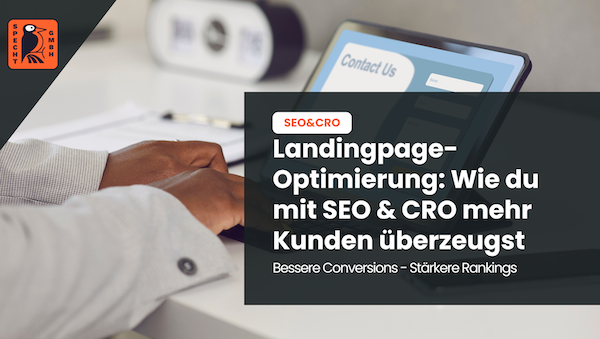Have you ever wondered how to realize the full potential of your online store and increase your sales? Well, Enhanced Ecommerce Tracking could be the answer! In this blog post, we'll look at the definition of Enhanced Ecommerce Tracking and explore its importance for your online store. We'll also look at the difference to traditional ecommerce tracking and how it integrates seamlessly with Google Analytics.
Enhanced Ecommerce Tracking is an advanced feature that gives you detailed insights into your customers' buying behavior. It allows you to track and get comprehensive reports on events such as product views, shopping cart actions, and transactions. By integrating this feature with Google Analytics, you get a comprehensive overview of the success of your online store.
Unlike traditional Ecommerce tracking, Enhanced Ecommerce goes a step further. It offers advanced features like product detail views, event tags for specific actions and segmentation capabilities for your data.
With Enhanced Ecommerce Tracking, you can take your online business to the next level and gain valuable insights to optimize your conversion rates. So let's dive in and find out how you can enable this powerful feature!
Advantages of Enhanced Ecommerce Tracking for the Online Shop
Detailed insights into the buying behavior of customers
-
Enhanced Ecommerce Tracking provides an online store with detailed information about customer behavior throughout the buying process.
-
It enables a precise analysis of which products were viewed, added to the shopping cart or ultimately purchased.
-
With these insights, the store operator can better understand what customers are interested in and how they react to different offers.
Optimization of the product range and product presentation
-
Thanks to the data obtained, the online store can optimize its product range and adapt it to the needs of its customers.
-
If certain products are particularly popular, they can be advertised more strongly or placed more prominently.
-
By analyzing purchasing behavior, weak points in the offering can also be identified and improved.
Improving the conversion rate and sales
-
Enhanced Ecommerce Tracking helps increase conversion rates by providing insight into where potential customers abandon the buying process.
-
The store operator can take targeted measures to remove these hurdles and thus generate more sales.
-
Optimizing the product range and product presentation also increases sales.
Effective measurement of marketing campaigns
-
With Enhanced Ecommerce Tracking, marketing campaigns can be effectively measured and analyzed.
-
It is possible to see how different marketing measures affect the buying behavior of customers.
-
This allows the store operator to adapt his marketing strategy and invest specifically in those channels that promise the greatest success.
Thanks to Enhanced Ecommerce Tracking, an online store benefits from detailed insights into the buying behavior of its customers.
-
Free
SEO strategy meeting
In a free SEO strategy talk, we uncover untapped potential and develop a strategy to help you become more successful on Google.

- More organic visibility
- More organic visitors to your website
- More inquiries & sales
Step-by-step guide to setting up Google Analytics for Enhanced Ecommerce Tracking
To set up Enhanced Ecommerce Tracking in Google Analytics, you need to follow a few steps. Here is a simple guide to help you do that:
-
Create a Google Analytics account and property:
-
Go to the Google Analytics website and create a new account.
-
Add a new property to track your website or online store.
-
-
Enable Enhanced Ecommerce features in the account settings:
-
Open the account settings in your Google Analytics account.
-
Look for the Enhanced Ecommerce settings and enable them.
-
-
Implementation of the tracking code on the website or online store:
-
Copy the provided tracking code from Google Analytics.
-
Fügen Sie den Code vor dem schließenden </head>-Tag Ihrer Website ein.
-
-
Configuration of the required data structures and reports:
-
Read the Google Analytics Developer Guide for information on how to configure it.
-
Adjust your tag configuration accordingly.
-
With these steps, you have successfully set up Enhanced Ecommerce Tracking with Google Analytics. Now you can measure clicks, analyze data, and gain valuable insights.
Please note that this guide only provides an overview of the setup. It is recommended to use other resources and get more in-depth knowledge of Google Analytics features to get the most out of your tracking.
Use of Enhanced Ecommerce Tracking to optimize the online store
Using Enhanced Ecommerce Tracking offers numerous advantages for optimizing your online store. With this feature, you can analyze your customers' buying behavior and gain valuable insights to improve your store. Below are some ways you can use Enhanced Ecommerce Tracking:
-
Analyze the purchase funnel and identify abandonment points in the checkout process: By tracking your customers' shopping activities, you can track the entire checkout process and identify potential abandonment points. This gives you insights into your customers' checkout behavior and enables you to take targeted action to remove these hurdles.
-
Evaluate the performance of individual product categories and products: With the help of Enhanced Ecommerce Tracking, you can evaluate the performance of your various product categories and individual products. This tells you which products are particularly popular and which may need to be optimized.
-
Segmenting the target group according to demographic characteristics or behaviors: Another option is to segment your target audience using demographic characteristics or behaviors. This gives you detailed information about your customer base and allows you to develop personalized marketing strategies.
-
Personalize the customer experience based on individual interests: By using Enhanced Ecommerce Tracking, you have the ability to personalize the customer experience in your online store. You can take into account individual interests and preferences of your customers and present them with tailored offers or recommendations.
Enhanced Ecommerce Tracking offers numerous features and options to improve the performance of your online store.
Success factors for effective use of Enhanced Ecommerce Tracking
Regular review and update of the implemented data structures
-
To ensure that Enhanced Ecommerce Tracking works optimally, it is important to regularly review and update the implemented data structures.
-
Through regular review, possible errors or inconsistencies can be detected and corrected at an early stage.
-
Updated data structures enable more accurate measurement of product performance and the customer journey.
Continuous analysis and interpretation of the collected data
-
Ongoing analysis and interpretation of the data collected is critical to gaining valuable insights.
-
Analysis can identify trends and patterns that reveal how well certain products are performing.
-
Interpreting the data helps measure the true success of products and identify areas for improvement.
Derivation of concrete recommendations for action from the findings obtained
-
Specific recommendations for action should be derived from the findings.
-
These recommendations can, for example, suggest optimizations in marketing or sales to improve product performance.
-
By taking targeted action based on the insights of Enhanced Ecommerce Tracking, the company can achieve its goals more effectively.
Integration of Enhanced Ecommerce Tracking into the entire marketing and sales process
-
Effective use of Enhanced Ecommerce Tracking requires integration into the overall marketing and sales process.
-
Integration allows data to be seamlessly shared between different systems to provide a holistic view of the customer journey.
Improve conversion rate with Enhanced Ecommerce Tracking
The conversion rate is a decisive factor for the success of an online store. By using Enhanced Ecommerce Tracking, you can take targeted action to improve this rate. Here are some ways you can do that:
-
Identifying weak points in the ordering process and optimizing them: By using Enhanced Ecommerce Tracking, you can analyze the entire ordering process in detail. This allows you to identify possible weak points and optimize them in a targeted manner. For example, long loading times or unclear steps in the checkout process can lead to a lower conversion rate. Adjustments at these points can improve user-friendliness and thus increase the conversion rate.
-
A/B tests to improve usability and the checkout process: With Enhanced Ecommerce Tracking, you have the option of carrying out A/B tests. This involves testing different variants of a website or process to find out which variant leads to a higher conversion rate. For example, different layouts of the shopping cart or different placements of call-to-action buttons can be tested.
-
Personalize product recommendations based on customer buying behavior: By tracking your customers' buying behavior, you can make personalized product recommendations. For example, if a customer has purchased a particular product, similar products can be recommended to them. This increases the likelihood that the customer will buy more products, thus increasing the conversion rate.
-
Implement cross-selling measures for higher average orders: With Enhanced Ecommerce Tracking, you can also implement cross-selling measures.
- Do you know my SEO newsletter?
Register now and receive regular tips from the experts.
Analysis and interpretation of data with Enhanced Ecommerce Tracking
Enhanced Ecommerce Tracking enables the detailed evaluation and interpretation of data in e-commerce. With this analysis tool, various aspects of user behavior can be recorded and analyzed in order to gain valuable insights.
Evaluation of the shopping cart, product views and clicks, and transactions
Enhanced Ecommerce Tracking makes it possible to track the entire buying process in the online store. Information such as the number of products in the shopping cart, the number of product views and clicks, and completed transactions can be measured. This data provides information about the interest of customers in certain products and enables targeted optimization of the offer.
Comparison of different time periods or segments for trend analyses
Another advantage of Enhanced Ecommerce Tracking is that you can compare different time periods or segments with each other. This allows trends to be identified and analyzed. For example, one can determine whether certain products were particularly popular in a certain period or whether user behavior differs in different customer segments.
Use of user-defined reports for individual data evaluation
With Enhanced Ecommerce Tracking, custom reports can be created to facilitate individual data analysis. This can be done by choosing from a variety of metrics and dimensions to answer specific questions. These custom reports allow for in-depth analysis and interpretation of the collected data.
Derivation of concrete recommendations for action from the findings obtained
The analysis and interpretation of data with Enhanced Ecommerce Tracking is not only used for pure data collection, but also to derive concrete recommendations for action.
Conclusion: Increase your sales with Google Analytics Enhanced Ecommerce
Congratulations! You have now received a comprehensive overview of the benefits and setup of Google Analytics Enhanced Ecommerce Tracking. With this powerful tool, you can not only improve your conversion rate, but also gain valuable insights to further optimize your online store.
Use Enhanced Ecommerce Tracking to get detailed information about your customers' behavior. Analyze and interpret this data to identify weaknesses in your store and take targeted action to improve user experience and revenue. Remember that continuous monitoring and regular adjustments are crucial to achieve long-term success.
Put your newly acquired knowledge into practice now and watch your sales increase. Start setting up Google Analytics Enhanced Ecommerce Tracking today and make your online store a success!
FAQs
How can I set up Google Analytics for Enhanced Ecommerce Tracking?
To set up Google Analytics for Enhanced Ecommerce Tracking, follow our step-by-step instructions in section 2 of this blog post. There you will find detailed instructions on how to integrate Enhanced Ecommerce code on your website.
What information can I track with Enhanced Ecommerce Tracking?
With Enhanced Ecommerce Tracking, you can track various information, including product views, in-cart events, transactions, and more. This data gives you valuable insights into your customers' behavior and allows you to optimize your online store.
Can I use Enhanced Ecommerce Tracking for mobile apps as well?
Yes, Enhanced Ecommerce Tracking can also be used for mobile apps. Google Analytics provides special features and integrations for tracking events in mobile apps. For more information, see the official Google Analytics documentation.
How can I improve my conversion rate with Enhanced Ecommerce Tracking?
To improve your conversion rate with Enhanced Ecommerce Tracking, it is important to continuously optimize the user experience on your website. Analyze the data from Google Analytics to identify weak points and initiate measures to improve the user experience and the purchasing process.
Are there other tools or platforms for analyzing Ecommerce data?
Yes, besides Google Analytics, there are many other tools and platforms for analyzing Ecommerce data.






